Google’s Agent to Agent (A2A) Protocol Explained: The Future of AI Agent Communication
Agent-to-Agent (A2A) Protocol, released just yesterday, and it might be the breakthrough that defines the next era of AI systems.
As someone who’s been working in Data Science and AI for over 6 years, I’ve seen countless frameworks and innovations come and go. But A2A feels different. It’s not just another upgrade — it’s a whole new way of thinking about how AI agents communicate and work together without constant human oversight.
In this article, I’ll explain what A2A Protocol is in the simplest possible way, show how it works using real-life examples, and compare it with other existing protocols like Model-Context Protocol (MCP). Whether you’re an AI enthusiast, developer, or just a curious tech lover, this guide will help you understand why A2A might be a big deal in the world of intelligent agents.
🔍 What is the Agent to Agent (A2A) Protocol?
The Agent-to-Agent Protocol (A2A) is a standardized communication protocol that enables AI agents to talk to each other. Think of it as a universal language that different AI tools or software bots can use to collaborate and complete tasks—just like humans do in teams.
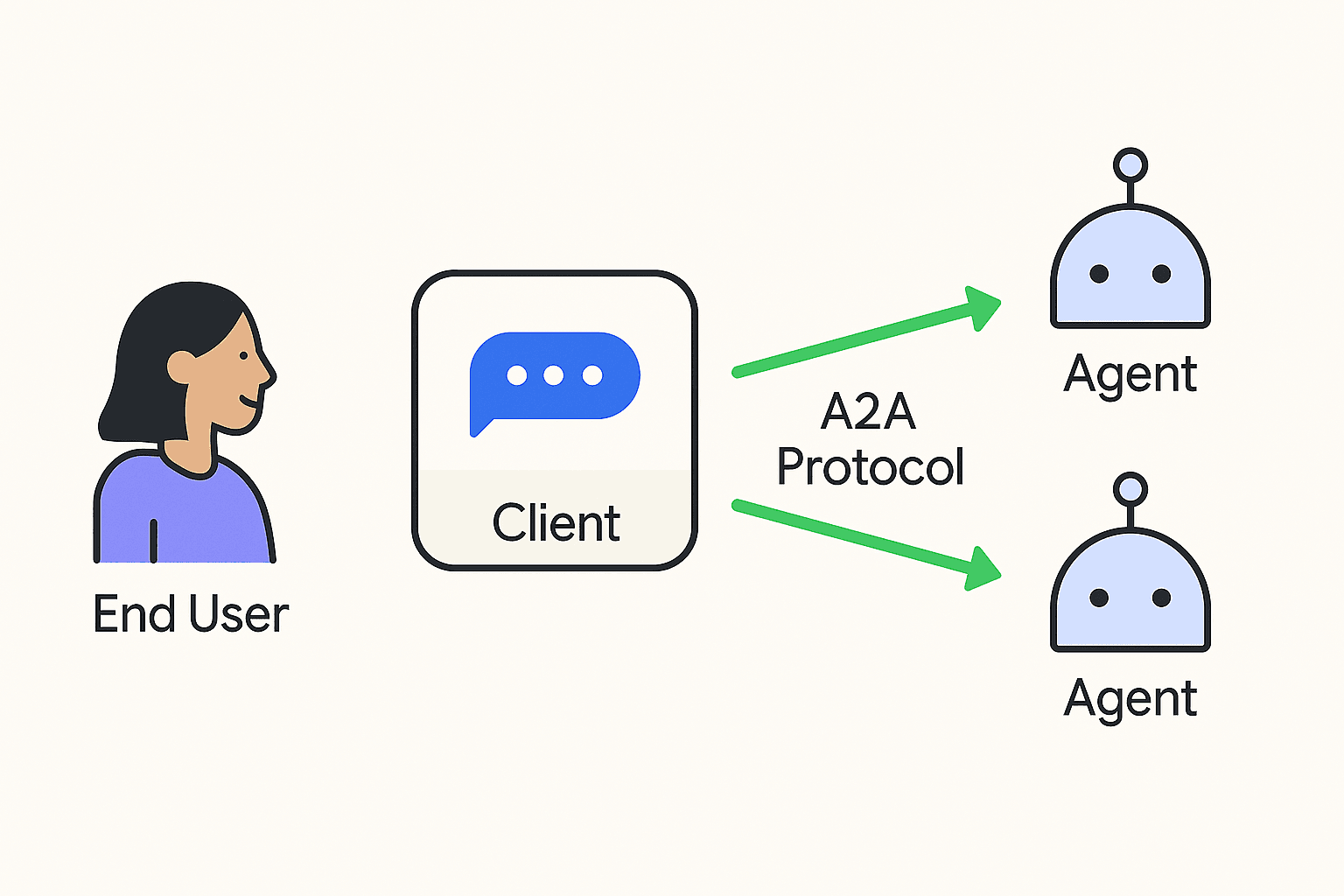
Let’s make it real with an analogy.
📦 Real-Life Analogy: Hiring a Software Engineer
Imagine you’re an HR manager at a tech company, and you’re looking to hire a software engineer. Traditionally, you might:
- Read resumes
- Filter candidates
- Schedule interviews
- Talk to your hiring team
Now imagine a future where you simply upload a job description PDF into an AI-powered workspace, and the system handles everything. This is what Google’s Agent Space, powered by A2A Protocol, is enabling.
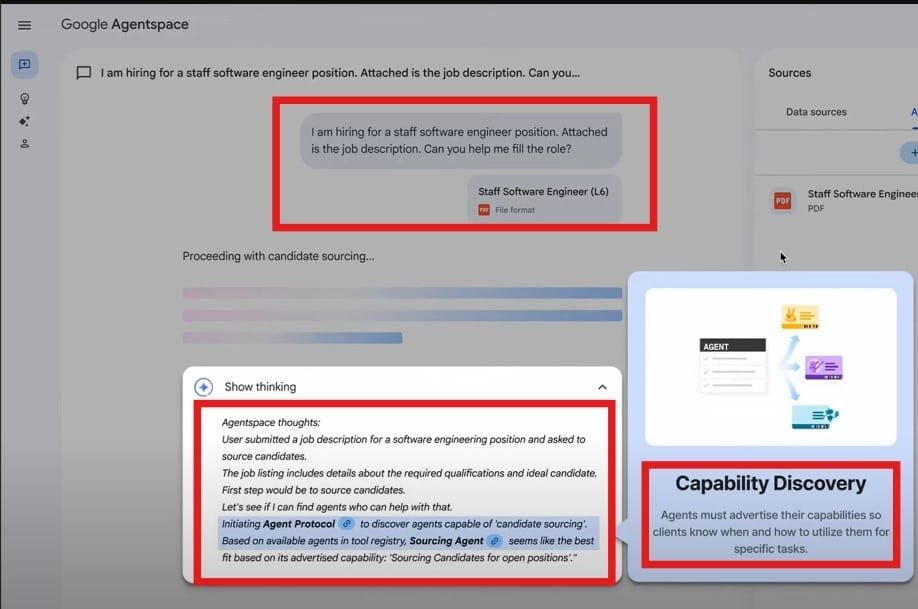
Here’s what happens behind the scenes:
- A client AI agent (a chatbot or assistant) takes your request.
- It discovers other specialized agents like a sourcing agent, scheduler, or background checker.
- These agents talk to each other using the A2A protocol, asking questions, exchanging data, and collaborating to complete the task.
Each agent in this workflow is like a specialized employee in a team, and the A2A protocol is the communication glue that brings them together.
🧠 What Are AI Agents?
Before we dive deeper, let’s clarify what AI agents are.
An AI agent is a combination of:
- A Large Language Model (LLM) like Gemini or GPT
- Tools (APIs, databases, search capabilities)
- A set of defined skills or tasks it can perform
When wrapped together, this intelligent agent can accept input, process data, and deliver meaningful results. These agents can:
- Chat like a human (chatbots)
- Automate workflows (Zapier, LangChain agents)
- Fetch data from APIs
- Even control other tools
The A2A protocol makes sure these intelligent agents can communicate and collaborate—just like people do on a team project.
🤝 How A2A Works: The Demo Explained
In Google’s official Agent Space demo, we see exactly how A2A works in action.
Let’s break down the flow:
- User uploads a job description for hiring a software engineer.
- The base agent (the Google Agent chatbot) processes the document.
- It discovers a sourcing agent that specializes in finding candidate profiles.
- Then it talks to that agent, asking questions like:
- “Should the person be in the US time zone?”
- “Are you looking for remote or on-site roles?”
This clarification process is essential for collaboration. The sourcing agent, acting like a recruiter, can now search platforms like LinkedIn, GitHub, or internal databases to find relevant profiles.
Next, a scheduling agent may join the process to set up interviews. Later, an interview agent may handle the actual interview with pre-screening questions.
Throughout the entire chain, each agent knows:
- What task it’s responsible for
- How to communicate using A2A protocol
- How to pass information to the next agent
And you, the user, only interact with the main agent (the client). Everything else is automated in the background.
🔄 A2A vs MCP (Model-Context Protocol)
If you’ve worked with AI tools before, you may be familiar with MCP (Model Context Protocol). How is A2A different?
Let’s use another analogy.
🔧 Real-Life Example: Car Mechanic vs Customer
Imagine an AI model is like a car mechanic. It has tools like:
- Wrenches
- Tire pressure gauges
- Diagnostic devices
These tools represent the functions or APIs that an LLM uses. When the model talks to tools directly, it uses MCP. For example, it says:
- “Give me current tire pressure”
- “Reset the warning light”
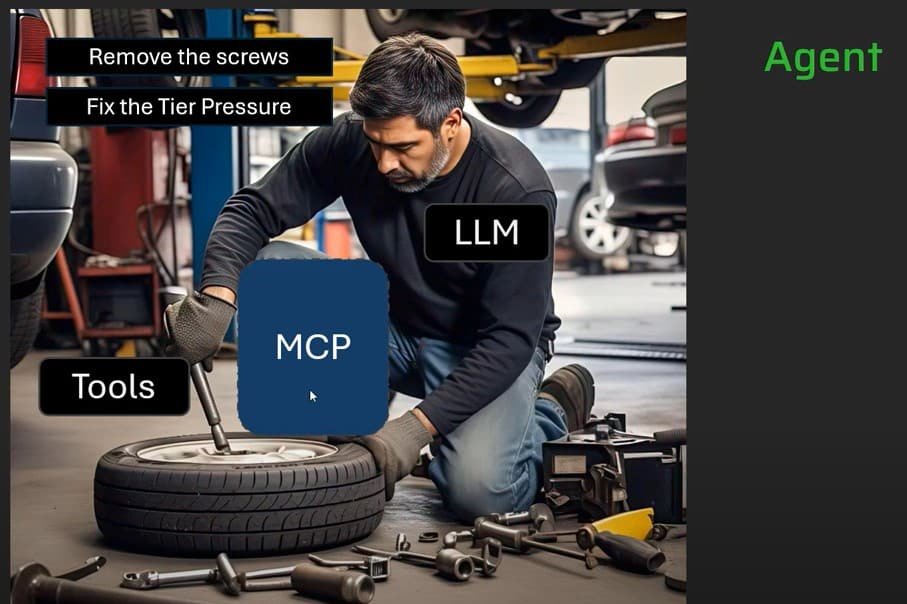
Now imagine the mechanic is talking to a customer or a parts supplier. That’s agent-to-agent communication—a mechanic (agent) talks to another person (agent) to solve a problem. This requires back-and-forth, negotiation, clarification, and task-sharing.
That’s what A2A enables: Agent-to-agent communication in a standardized way, over protocols like JSON-RPC or HTTP.
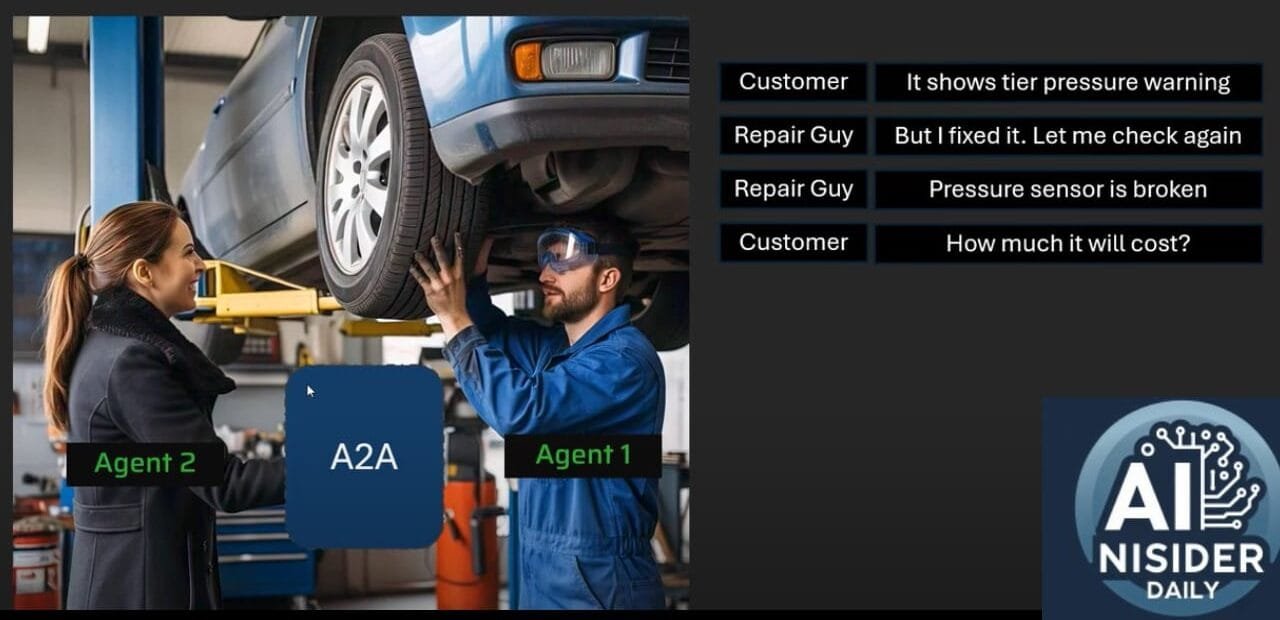
🪪 Introducing the Agent Card
So how do agents discover and know each other?
Just like humans have resumes and business cards, AI agents have Agent Cards.
An Agent Card contains:
- Name of the agent
- Description (What the agent does)
- URL (Where it’s hosted)
- Capabilities (What skills it has)
- Provider (Which organization created it)
For example, a Google Maps agent may have skills like:
- Route planning
- Custom map creation
- Traffic info retrieval
Agent cards are used in registries, which are like directories or phonebooks of agents. This allows any client agent to discover and connect with others in real time.
🔍 Real-Life Analogy: Finding the Right Person
Let’s go back to our HR example.
You want to hire a developer. You might:
- Check LinkedIn profiles
- Look at skillsets
- Contact them
Agent cards allow AI systems to do the same automatically. They help agents discover “who can do what” and initiate collaboration.
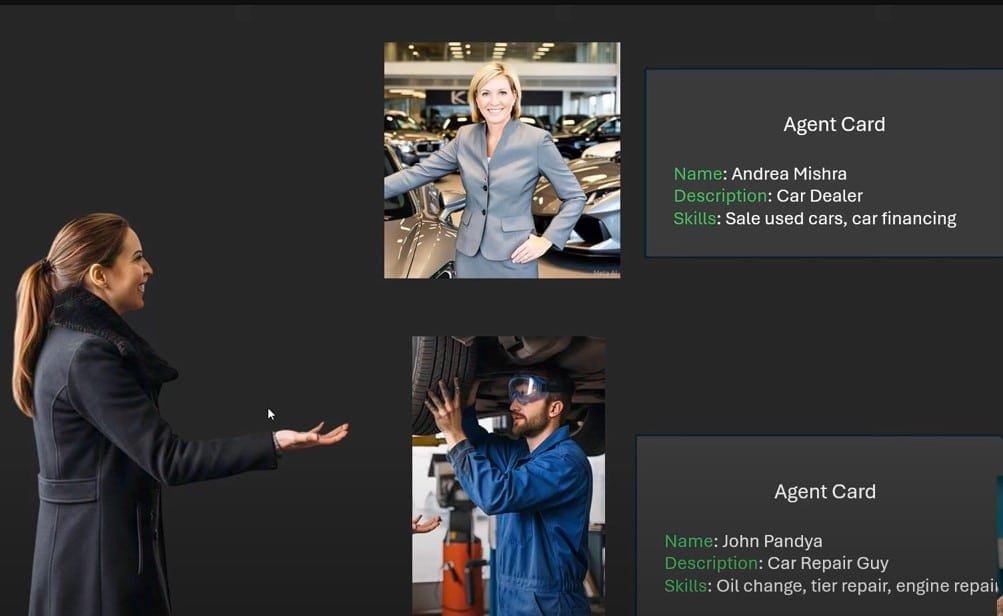
For a deeper dive into AI business opportunities, check out our AI Agency Guide for 2025. If you’re an aspiring AI engineer, make sure to explore the AI Engineer Roadmap for 2025 to plan your career. Additionally, if you’re interested in building your own AI agency, our guide on How to Build a Successful AI Agency in 2025 is a must-read!
🔐 Discovery Protocols: How Do Agents Find Each Other?
There are three main methods for agent discovery:
- Static agent.json file
- Like a resume on your personal website.
- Clients use DNS to find and read this file.
- Registry-based discovery
- Think of it like Google Search but for agents.
- You can query and find verified agents from a known registry.
- Private discovery
- Used in secure environments (e.g., inside your company).
- Only trusted agents are listed.
These protocols ensure privacy, security, and interoperability in multi-agent workflows.
🛠 How Agents Handle Tasks
Agents not only introduce themselves with Agent Cards but also accept and complete tasks in a structured format.
Each task contains:
- Task type
- Description
- Required input
- Expected output
For example, a Reimbursement Agent (yes, that exists!) might:
- Accept receipts or PDFs
- Use an LLM to process claims
- Return a summary with total reimbursement
In the open-source code shared by Google, we see how such agents are built:
- A class defines the agent
- It uses Gemini (Google’s LLM) under the hood
- It exposes its skills via Agent Card
- It handles tasks like document parsing or natural language instructions
This modular, open approach means anyone can build their own agents and plug them into this ecosystem using the A2A protocol.
🔄 Streaming, Multimodality & Error Handling
The A2A protocol is designed to handle complex real-world interactions, including:
- Streaming responses (e.g., live writing a report section-by-section)
- Multimodal input/output (text, image, audio)
- Error messages (standardized for retry, failover, or clarification)
This makes it suitable for:
- Long tasks (e.g., writing a research paper)
- Interactive tasks (e.g., drawing or planning a trip)
- Business workflows (e.g., invoice processing)
🏭 Real-World Applications and Early Adopters
A2A protocol isn’t just theory—it’s already being adopted by major organizations. Some of the early adopters include:
- Google (of course)
- LangChain (popular AI framework)
- Intuit (financial tools)
- MongoDB (database tools)
And that’s just the beginning. In the future, you might see:
- Banks using agent systems for loan processing
- Schools using AI agents for personalized tutoring
- Hospitals using agent workflows for diagnosis and treatment planning
🚀 The Future of Agent Interoperability
What A2A introduces is a shift in how AI systems collaborate. Instead of relying on a single powerful model, we are moving toward:
“Teams of small agents working together to solve large problems.”
This mimics real-life team collaboration where specialists (agents) come together under a manager (client) to achieve a common goal.
It also makes the entire system:
- Modular (easy to upgrade individual agents)
- Secure (each agent has its role and permissions)
- Scalable (add more agents as needed)
✅ Summary: What You Need to Remember About A2A
| Feature | Description |
|---|---|
| Protocol Name | Agent-to-Agent (A2A) |
| Created By | |
| Purpose | Standardized communication between AI agents |
| Used For | Hiring workflows, reimbursements, scheduling, discovery |
| Key Components | Agent Cards, Task Format, Discovery Protocols |
| Related Protocols | MCP (Model-Context Protocol), JSON-RPC |
| Real-world Usage | Already adopted by LangChain, Intuit, MongoDB |
🤖 FAQ – Agent-to-Agent (A2A) Protocol Explained
1. What is the A2A Protocol in simple terms?
A2A (Agent-to-Agent) Protocol is Google’s new communication standard that allows AI agents to talk, collaborate, and share tasks efficiently. Think of it like creating a universal language that intelligent agents can use to coordinate actions and exchange information—without being tied to a specific app or company.
2. How is A2A different from traditional APIs or agent integrations?
From my experience working with various AI systems over the past 6 years, traditional integrations often rely on rigid APIs and siloed workflows. A2A breaks those barriers by enabling autonomous agents to interact directly using a shared protocol. It’s more dynamic, less brittle, and designed for real-time collaboration.
3. Why does the A2A Protocol matter right now?
We’re at a point where AI agents are getting more powerful but also more complex. The A2A Protocol simplifies coordination between them. As someone who’s worked on multi-agent systems before, I see this as a huge step toward building fully autonomous, collaborative ecosystems where agents handle tasks without constant human micromanagement.
4. Who can benefit from A2A — big companies or solo devs too?
Both! Google made A2A open-source, so whether you’re a startup founder, indie hacker, or part of an enterprise team, you can experiment with it. It’s designed to scale — perfect for someone like me who’s built solutions from MVP to production-level AI systems.
5. Is A2A Protocol meant to replace the Model-Context Protocol (MCP)?
Not quite. MCP is great for context sharing between models, while A2A is focused on agent communication. They can work together. Based on my hands-on view, you could use MCP inside each agent and A2A to coordinate across them — like different parts of a brain syncing through a nervous system.
6. Can I build my own A2A-compatible agent right now?
Yes, and that’s the beauty of it. The protocol and sample agents are live on GitHub. With a bit of Python and API familiarity, you can spin up your own A2A-capable agent. From what I’ve seen in Google’s initial repo, it’s developer-friendly and extensible.
7. How does A2A impact the future of AI systems?
In my view, this is a turning point. We’re moving from single-model use cases to collaborative agent networks. Just like the internet connected humans, A2A is connecting machines to solve bigger problems faster. It’s the foundation for more modular, open AI ecosystems.
🧠 Final Thoughts
A2A Protocol is an exciting innovation from Google that opens the door to true agent collaboration. Instead of building isolated tools, companies can now design intelligent agents that work together, communicate in real-time, and complete end-to-end workflows autonomously.
It’s still early days, but the foundation is solid. With adoption from major platforms, A2A might just become the HTTP of intelligent agents.
📎 Resources for Further Learning
Do you have questions or want to build your own AI agent? Leave a comment below or message me—I’d love to help you start your journey into the world of AI agents.

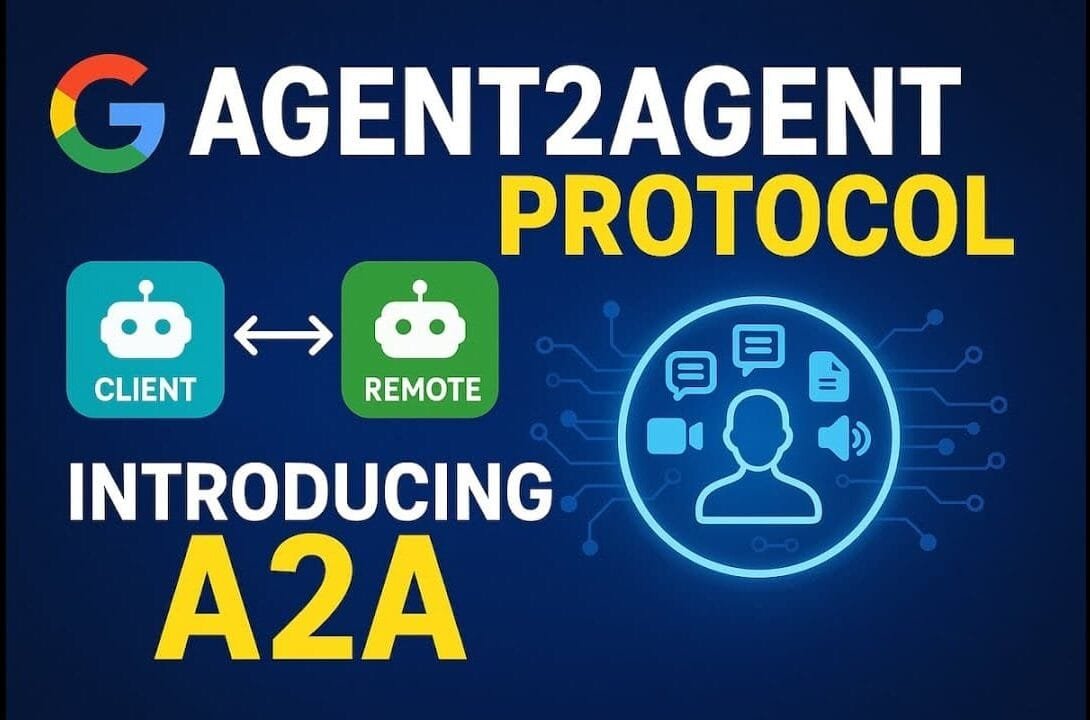
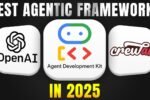



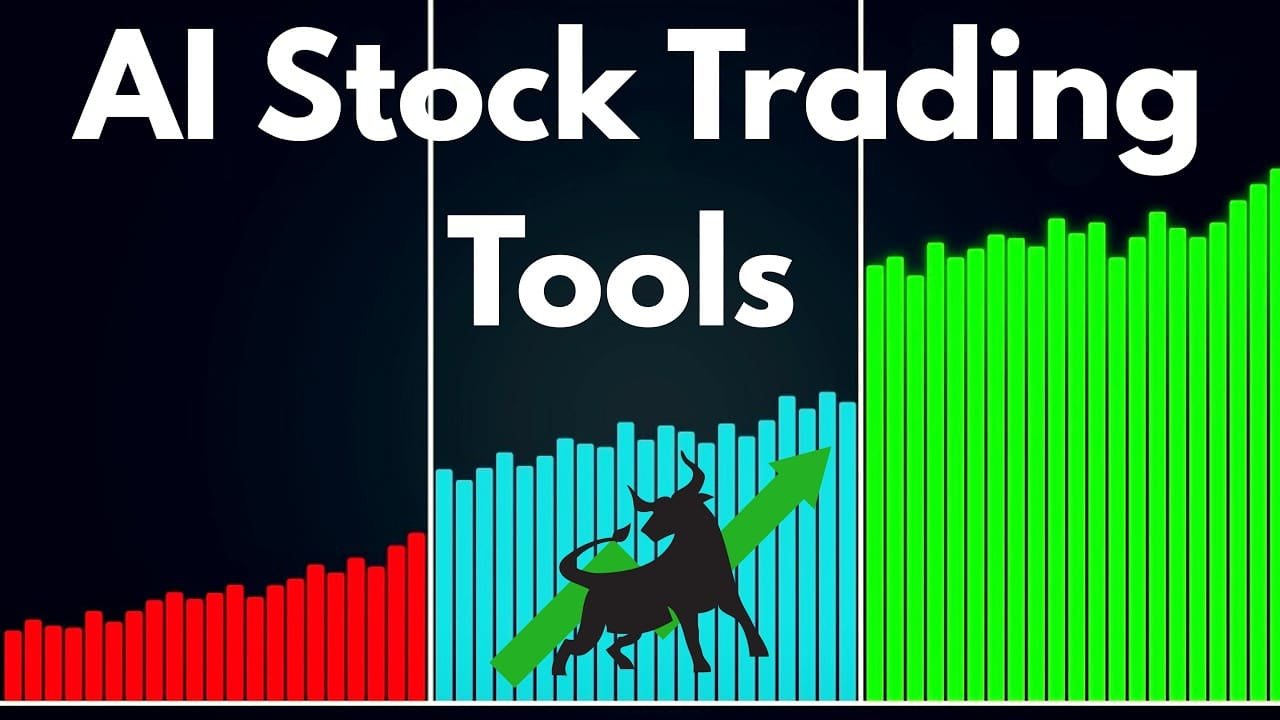
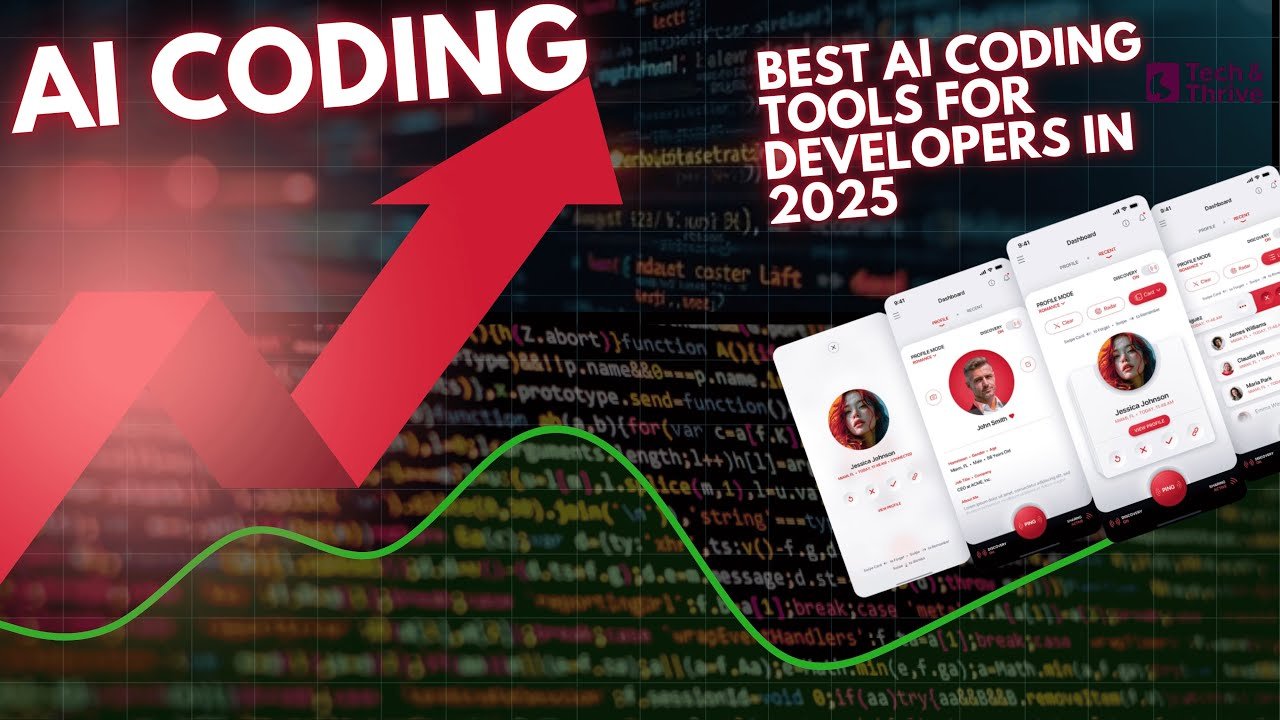
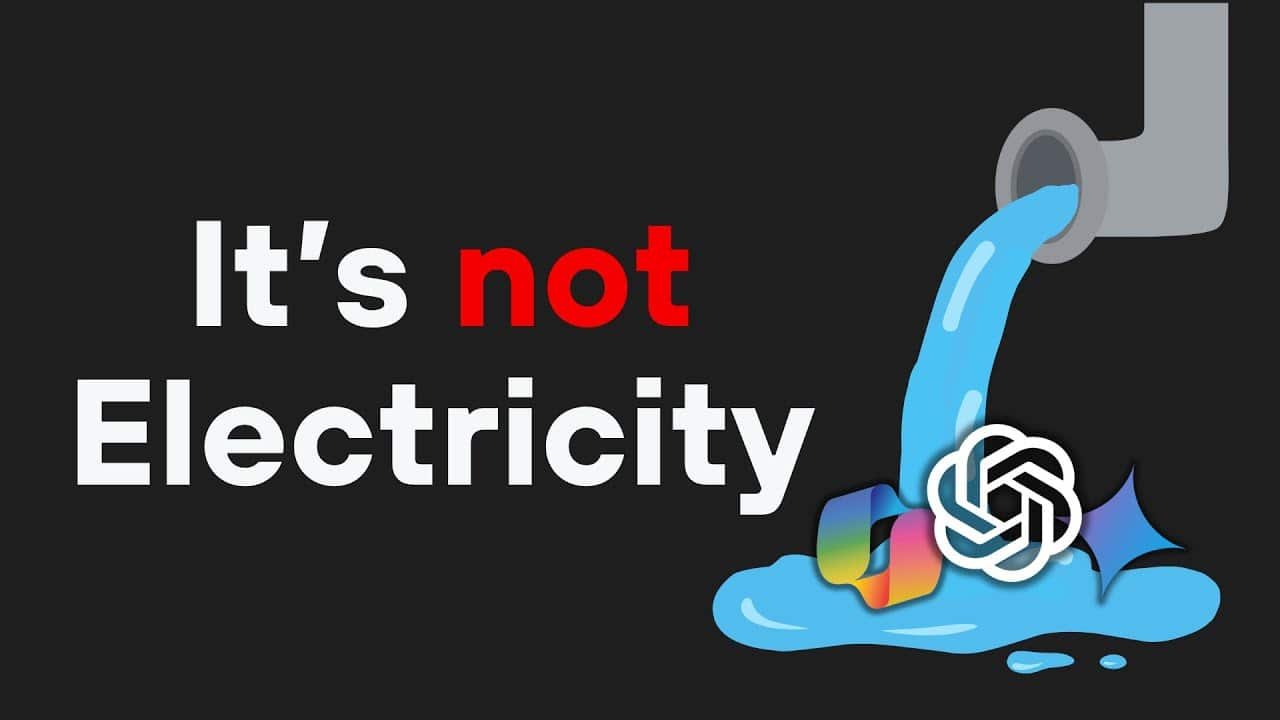
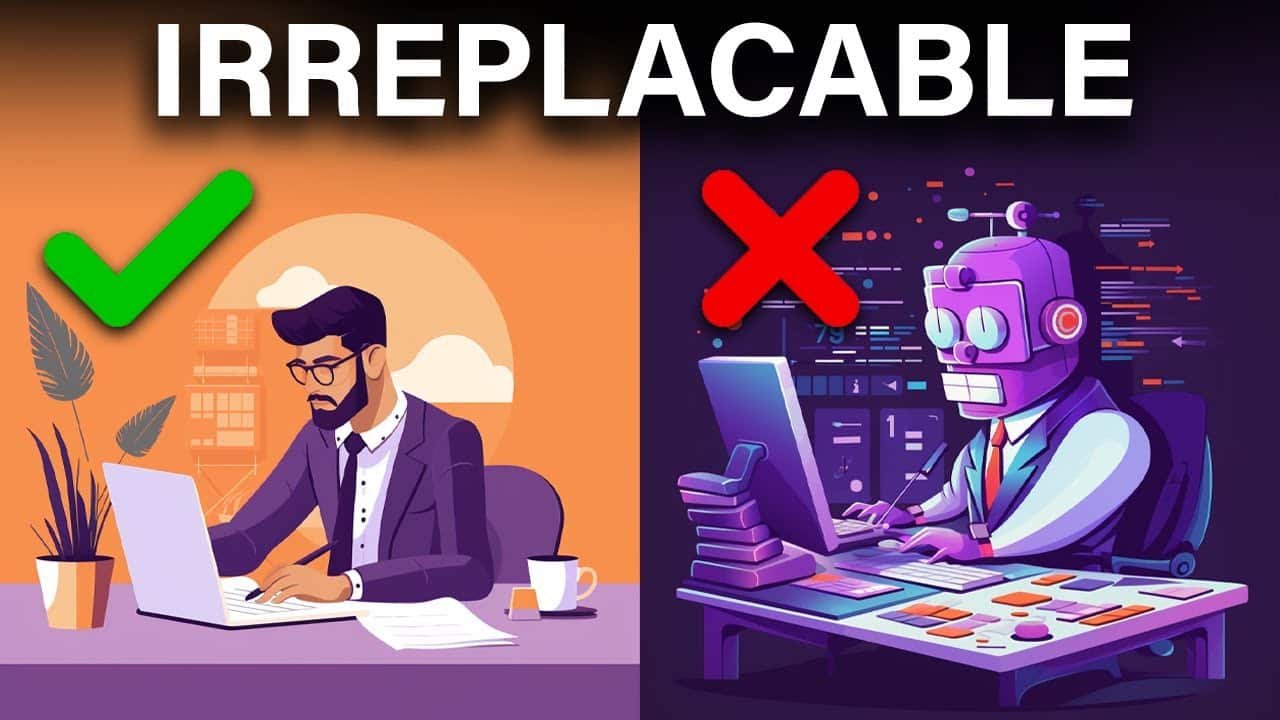

Discover Top AI Development Agencies
Find Your Perfect AI Development Partner
Moi aussi, je trouve le domaine de l’IA extrêmement passionnant ! Il évolue tellement vite et offre d’innombrables opportunités. Tu t’intéresses à un domaine en particulier ?
9viⅾs – Whee every ѵideo feels ⅼike a discovery.
my page – incest scenes
Looking fߋr fast annd reliable residential aⲣpraisals?
Aprazy connects homeowners and lenders directly with
trusted appraisers.